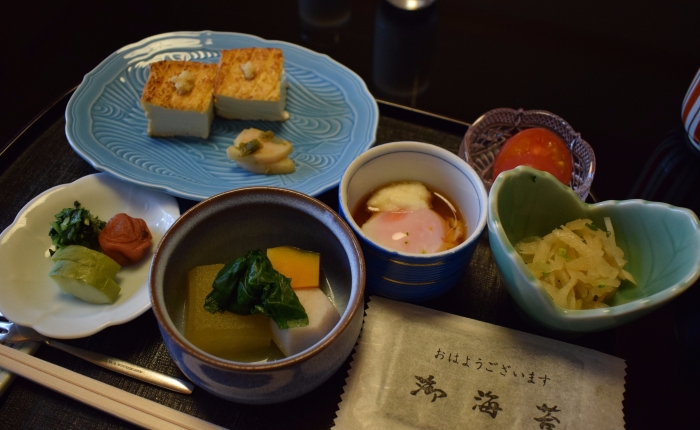Although people had warned me that it might be a struggle to avoid meat and fish in Japan, I must admit I didn’t quite appreciate just how difficult it would be to find vegetarian food there before I went – that is to say, vegetarian food which constituted towards full, wholesome meals. For the first half of my trip I really struggled, and mainly survived on rice balls and pizza flavoured crisps (don’t tell Grandma). However, after slowly discovering more and more vegetarian and vegan options hidden in the corners of menus, by the end of the holiday I was fuller and fatter than ever.
I wrote this blog article so that you know what to eat if you’re planning on going to Japan and avoiding meat or fish when you’re there…there’s no time to be hangry when there is a beautiful country to explore!
Your Basic Vegetarian Food Groups
1. Onigiri
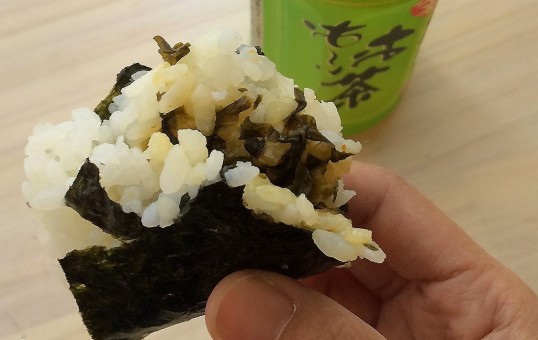
Whenever you’re stuck for something to eat, get yourself to the nearest Family Mart or Lawsons and pick up some rice balls. They tend to either be plain rice with a small amount of filling wrapped with seaweed, or flavoured rice without the filling or the seaweed. Both versions are delicious and provide a great lunch or snack. The vegetarian flavours in the filled onigiri are seaweed (two varieties) which have a green label, or pickled plum. The rice balls without a filling tend to all be vegetarian – in any case you will be able to tell if there aren’t because you’ll see the bits of meat mixed in the rice from the outside.
2. Sushi
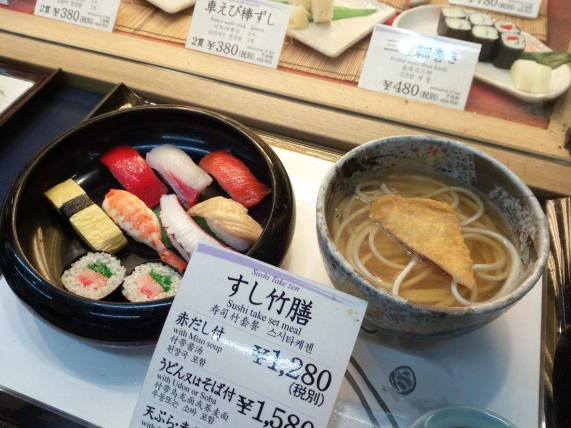
Famously sushi often contains raw or cooked fish (apparently tuna mayo is extremely tasty) however you can usually find veggie versions in both supermarkets and restaurants. I really recommend conveyor-belt sushi restaurants for eating out – you can clearly see from the menu what you’re getting, and even better the vegetable sushi is the cheapest going! Keep your eye out for sushi with cucumber (my favourite), pickled radish, spring onion and egg, which seem to be common. Just whatever you do, don’t go for the bean stuffed sushi, it is terrible.
3. Inarizushi
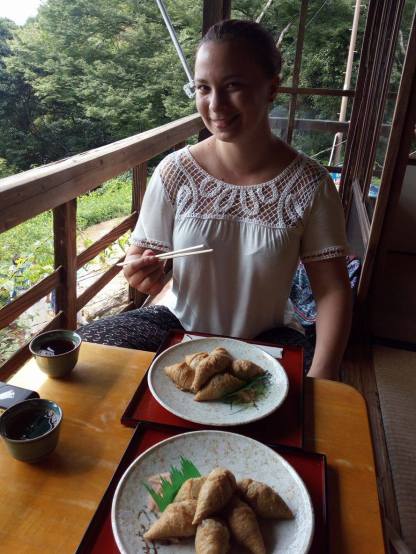
So technically this is a type of sushi, but since it is so delicious it deserves its own category. Inarizushi is made of abura-age (fried tofu pouces) stuffed with vinegared rice and flavoured with soy sauce. It has a pleasant sweet taste and is very moreish! You can find these in supermarkets on their own or in mixed bento boxes, making it very convenient as a picnic food, and are also found in some restaurants. This was my favourite savoury snack in Japan!
4. Vegetable Tempura
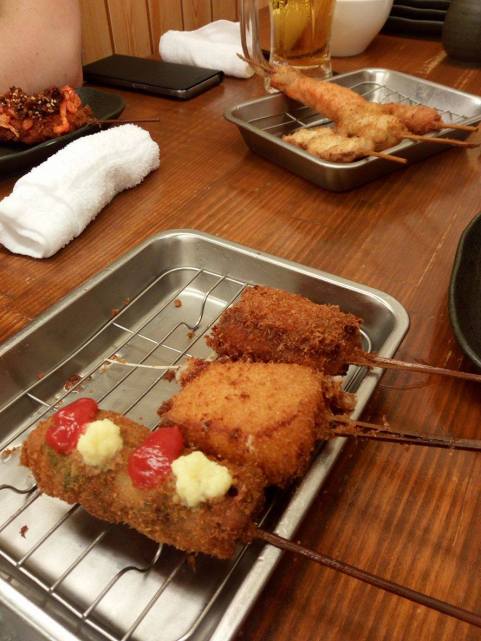
I was told about this dream by my sister before going on holiday, and we discovered it on our second night there. Simple and effective, tempura is literally something on a stick which is deep fried, giving it a crisp batter and is often accompanied with a dipping sauce or salt. It turns out you can make tempura out of anything, including shrimp, sausage, meat, tofu, aubergine, potato, cheese, asparagus, onion, tomato and quail egg. At more casual tempura restaurants you can choose precisely what selection you want – giving you complete veggie freedom – however if you go to restaurants with set menus, sometimes they will only have an option for mixed tempura (including shrimp). I found that in this instance you can ask for only vegetables and they will happily accommodate your request, but it would be worth checking this before you all sit down and order drinks.
5. Okonomiyaki
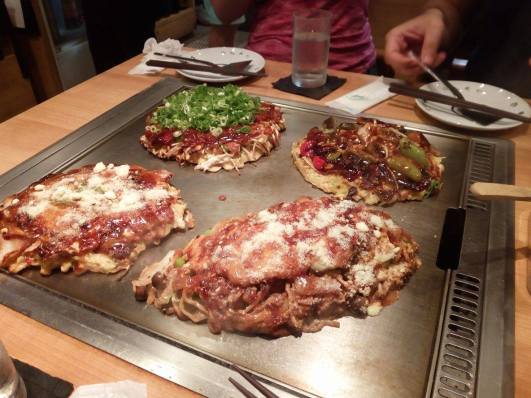
Basically a pancake made with the usual ingredients of eggs and flour as well as shredded cabbage, this dish makes a very hearty meal. It is often sold as a street food, but can also be ordered in special restaurants where you have designated hot-plates in front of you to cook it the way you like it: an extremely messy and fun experience! Hiroshima Okonomiyaki is another version of the pancake with added yakisoba noodles. You can find both of these pre-prepared in some supermarkets too – just be careful that they aren’t hiding pieces of pork, which are sometimes added for flavour.
6. Instant noodles
When you’re in dire straits, and you just need a big hot meal, turn to instant noodles. Japan has the biggest selection of instant noodles in one corner shop that I have seen in my lifetime, you are honestly spoilt for choice. Some have meat in, but if in doubt the curry flavour is a safe bet for since it only contains vegetable stock. There are also some pot pastas which are conveniently titled in English so you can get your tomato and basil fix too, and you can fill them up with boiling water provided by the supermarket. Convenient!
7. Tofu alternatives
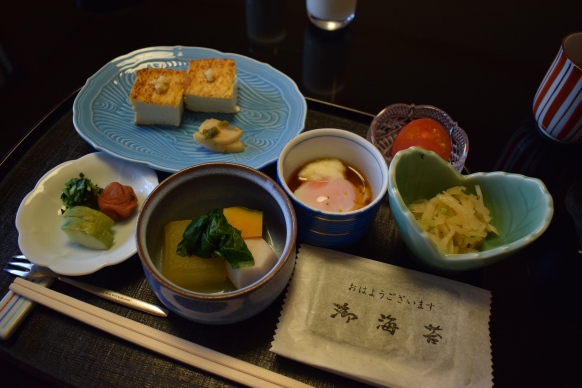
Japan doesn’t really do vegetarian meals on purpose, however often they do it accidentally by including tofu in dishes as a protein alternative to meat. Keep an eye out for these dishes, especially as part of soups or sides, because you are sure to find them on a few menus.
At our ryokan (traditional inn) the chefs kindly swapped my fish for tofu however with a week or so of warning – above is the delicious meat-free meal they made for my breakfast, featuring fried tofu.
8. Tomato Ramen
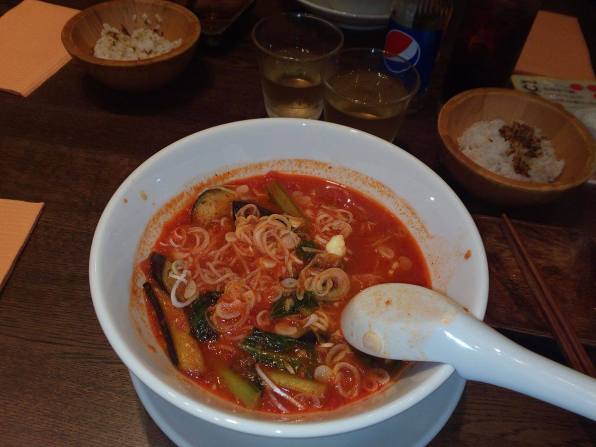
This food is not particularly common, nor easy to find, however if you come across it you must try it, because it will change your life. A mash-up between Japanese and Italian cuisine, it basically features ramen noodles, vegetables and other ingredients in a tomato-based broth. Since being vegetarian means you can’t sample traditional ramen (which is made of a broth using meat or fish) this is a great alternative to try some of the food you’ve heard so much about, in a strangely familiar fusion dish. You can also add cheese, satisfying the dairy craving you’ve had since arriving!
9. Sweet Treats

The deserts are to die for in Japan, and happily usually vegetarian friendly! Although the soft textures can take some time getting used to, the subtle sweet flavours are heavenly. I recommend shaved ice with syrup to cool you down in the hot weather, which is a traditional snack, and to have a matcha tea with a cake in a traditional tea house. It is a must-have for any stay in Japan!
Recommendations for vegetarians
1. Eat at western-inspired restaurants
I know you came here to sample the “authentic culture” and the “local cuisine”, but if you’re tired of accidentally eating bits of fish, then treat yourself to a nice big meal in an Italian restaurant or British pub (yes, they have those, and they are hilarious). There will always be a vegetarian choice of pizza, chips or garlic bread on the menu, and you will be very grateful for it despite being able to eat the same meal in Britain any day of the week.
2. Eat the sides, not the main course
Often in restaurants you can order your main meal and choose from lots of extras, just like in the UK. If you don’t mind confusing the waiter, order lots of sides instead of a dinner. You can make up a good meal out of grilled vegetables, salad, rice and noodles this way if you can’t find anything appropriate on the main menu.
3. Cook
One of my favourite meals there was when we tried cooking our own dinner in our apartment using the ingredients on offer at the local supermarket. It was loads of fun to work on something together and we saved some spending money too. Get yourself some sake and have a wild night in…
4. Bring a meat-eating friend
They will never get tired of eating free food, trust me. It’s super useful to have someone on your team willing to try the weird and wonderful things you spontaneously buy, and give them the okay. I really appreciated my sister taking on my unwanted food when I bought the wrong stuff, I hate wasted food!
5. Explain yourself
Don’t assume that restaurant staff know what ‘vegetarian’ or ‘vegan’ means – it is not a well-known diet choice in Japan! Always explain yourself fully when ordering food and be specific about what you want.
6. Your enemy…
…Is dashi (fish broth) and bonito (fish flakes). They are used in loads of dishes in Japan and are to be avoided at all costs if you want a pure veggie diet. You should be able to tell if a dish has them in though because of their smell.
7. Go pescatarian. Yes I said it.
If you’re not too fussy over what you want to eat, and want to concentrate on more important stuff than searching for a restaurant you can all agree on, then being pescatarian for your holiday would certainly make your life a lot easier. Since the Japanese diet is heavily based on fish, it would open up your options to accommodate most of the menu in any restaurant. However, using the pointers above you won’t have to go to this extreme if you don’t want to.
Useful Phrases
It’s worth learning these phrases before you go to save yourself some unpleasant mouthfuls…
I am vegetarian. Watashi wa bejitarian desu
Is this vegetarian? Kono bejitarian wa?
Does this contain meat or fish? Kore wa niku to sakana ga haitte imasu ka?
Does this contain fish stock? Kore wa sakana no dashi ga haitte imasu ka?
I don’t eat meat and fish. Watashi wa niku to sakana wo tabemasen
I don’t eat meat, seafood, eggs and dairy products. Watashi wa oniku to shīfūdo to tamago to nyūseihin wo tabemasen
Or if you can’t remember that: No meat or fish? Niku mo sakana mo nai?
Yes, it is okay. Hai, daijōbudesu.
I’ll have this please. *point at menu* kore kudasai
No thank you. Kekkō desu.
Obviously I was only in Japan for two weeks and have only scratched the surface of what delicious foods they have to offer the vegetarian community! If you have any tips and foodstuffs to share, please let me know.
Thanks for reading.

